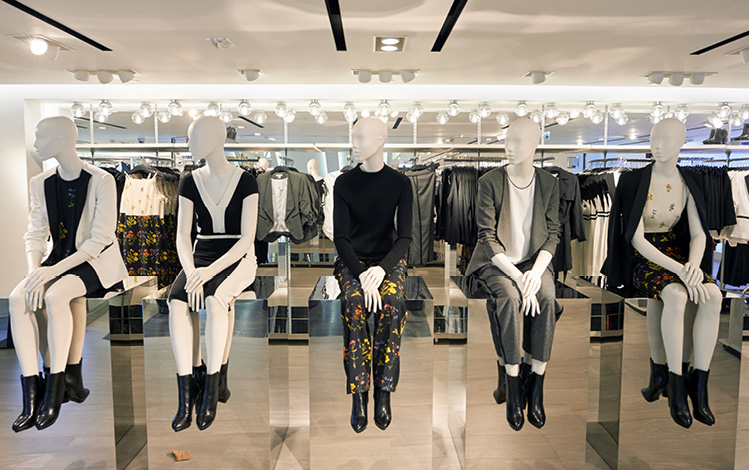

No Shortcuts In Sustainable Fashion: Five Mandatories for Ethical Brands
FROM TEXTILE INNOVATION TO GREENWASHING, THE FASHION INDUSTRY REMAINS AT THE FOREFRONT OF CONSUMERS’ MINDS. BUT WITH AN INDUSTRY WORTH $1.45 TRILLION AND AN EMPLOYEE BASE OF 300 MILLION ACROSS THE VALUE CHAIN, HOW DO FASHION BRANDS CONTRIBUTE TO SOCIAL TRENDS AND CULTURAL MOMENTS, WHILST ALSO ADDRESSING SYSTEMIC ENVIRONMENTAL AND ETHICAL ISSUES?
The Woolman Company brand campaign sparked online debate across Asia-Pacific, with consumers discussing whether clothing can ever truly be classified as sustainable, or whether the notion itself was an oxymoron. And with the heated debate surrounding the actions and decisions of Shein, it begs the question, as a clothing brand in the 21st century, how do you navigate a highly opinionated industry whilst still ensuring your brand remains true to itself?
HERE ARE OUR 5 MANDATORIES FOR YOUR BRAND THAT CAN HELP CONSUMERS IDENTIFY YOU AS MOVING TOWARDS HAVING ETHICAL AND SUSTAINABLE LEGITIMACY:
1. CIRCULARITY AND RESPONSIBILITY ARE CRITICAL TERMS FOR COMMUNICATION AND RESPONSE PLANNING
Circular fashion has become a key driver of conversation for many global brands, like Country Road and H&M, who have implemented circular fashion practices into their everyday operations. And whilst there is still ongoing work needed to define this relatively new operational model, it gives your brand the opportunity to take ownership of your fashion after it’s been sold. Moving away from take-make-waste to design-use-reuse.
As a clothing brand, it’s important to have a public response to circularity to demonstrate responsible stewardship. This can include your brand communicating a new operational plan, partnering to offer resale and renting services, or introducing in-store experiences that reinforce recycling practices. It’s critical to communicate this to your consumers and demonstrate your commitment to taking responsible end-to-end action for your products.
2. MOVE BEYOND PURPOSE STATEMENTS TO DELIVERABLE PEOPLE-CENTERED COMMITMENTS
This year’s Brands in Motion continues to reinforce the importance of addressing sustainability, whilst also finding that consumers now expect brands to take a people-centered approach to their business.
People-centered and sustainable practices can include supporting diverse communities, looking after the mental and physical health of employees and the individuals they work with and advocating for a sustainable economy for all. And whilst there are still misconceptions surrounding the business costs of addressing climate change and sustainable strategies, it’s the role of senior leaders to continue to advocate for change.
As a brand, it’s critical your consumers see your pledges leading to people-centered actions. Choose concerns that align with your brand’s DNA, which leads to tangible people focused and sustainable outcomes. This can then reinforce your brand's ethical decision-making capabilities and ensures your words don’t lead to greenwashing.
3. DON’T BE AFRAID TO EXPERIMENT – TECHNOLOGY CAN BE THE SOLUTION
Fashion brands should continue to remain at the forefront of innovation to address critical sustainable issues the industry faces. And there is a clear appetite for brands to experiment and innovate using technology across the full operational spectrum.
In 2021 we saw this play out through Ralph Lauren making public commitments to positively transform the dyeing industry with more sustainable water solutions, consumer interest in vegan leather solutions growing exponentially over the past 24 months, and Dole winning a Grand Prix at the Cannes Lions.
But it’s not the innovation itself that’s key, but an appetite to take technological and operational risks. If you are a small-scale designer or a start-up company, you’re not required to spend thousands on technology, but instead be open to risks, potential partnerships and innovative thinking. By experimenting and trying new solutions, you reinforce your brands' commitment to fashion innovation for good.
4. BE TRANSPARENT AND WHERE POSSIBLE, MOVE TOWARDS HONESTY AND AUTHENTIC BRAND SELF
This year, Patagonia set a benchmark for the rest of the fashion industry. This ‘radically’ transparent decision to support the earth is a teachable moment but a difficult action for most brands to recreate. But Patagonia's actions demonstrate their strong positive relationship with their consumers, resulting in no significant backlash or skepticism due to past goodwill and authentic brand identity.
Patagonia has spent years actively engaging with transparency and reporting on shortcomings to key stakeholders, giving consumers visibility into their clothing processes, and documenting their relationships with vendors and third-party suppliers. All with the goal to slowly curate an authentic brand self that lives and breathes sustainability and ethical operations. Transparency isn’t a shortcut that can be taken by your brand to temporarily fix historic issues. It’s a long-term process that commits your brand to better self-authenticity over time and builds momentum to future-proof your brand from scrutiny.
5. ETHICS AND SUSTAINABILITY ARE TWO DIFFERENT WORDS – ADDRESSING ONE DOESN’T MEAN YOU ARE ADDRESSING THE OTHER
Perhaps the most critical mandatory for fashion brands to follow is to understand the difference between ethics and sustainability. The recent Boohoo and Kourtney Kardashian sustainability announcement was a band-aid solution to an operational problem, with both participants being scrutinised across social and pop media for their attempt to address recycling in a superficial way, without addressing historic worker wage issues. Ultimately, their messaging tried to bucket sustainability and ethics into the same category whilst choosing to ignore consumer sentiment.
As a fashion brand, you need to distinguish the differences in your brand's tactics, operational goals, and responses to both issues. This can help to reduce consumer doubt and greenwashing claims. But it’s difficult to address both, and the brands getting it right use mixed-tactic solutions.
From a brand reputation perspective, mixed-tactics solutions can include consistent thought leadership communication, supply chain testimonials, brand campaigns addressing sustainable futures, and transparent operational processes. From a consumer trust perspective, this includes ethical and sustainable practices used within your products such as correct labelling, and in-store and digital touchpoint experiences.
If your brand needs support regarding how it communicates your ESG positioning, reach out to WE Communications at [email protected]

